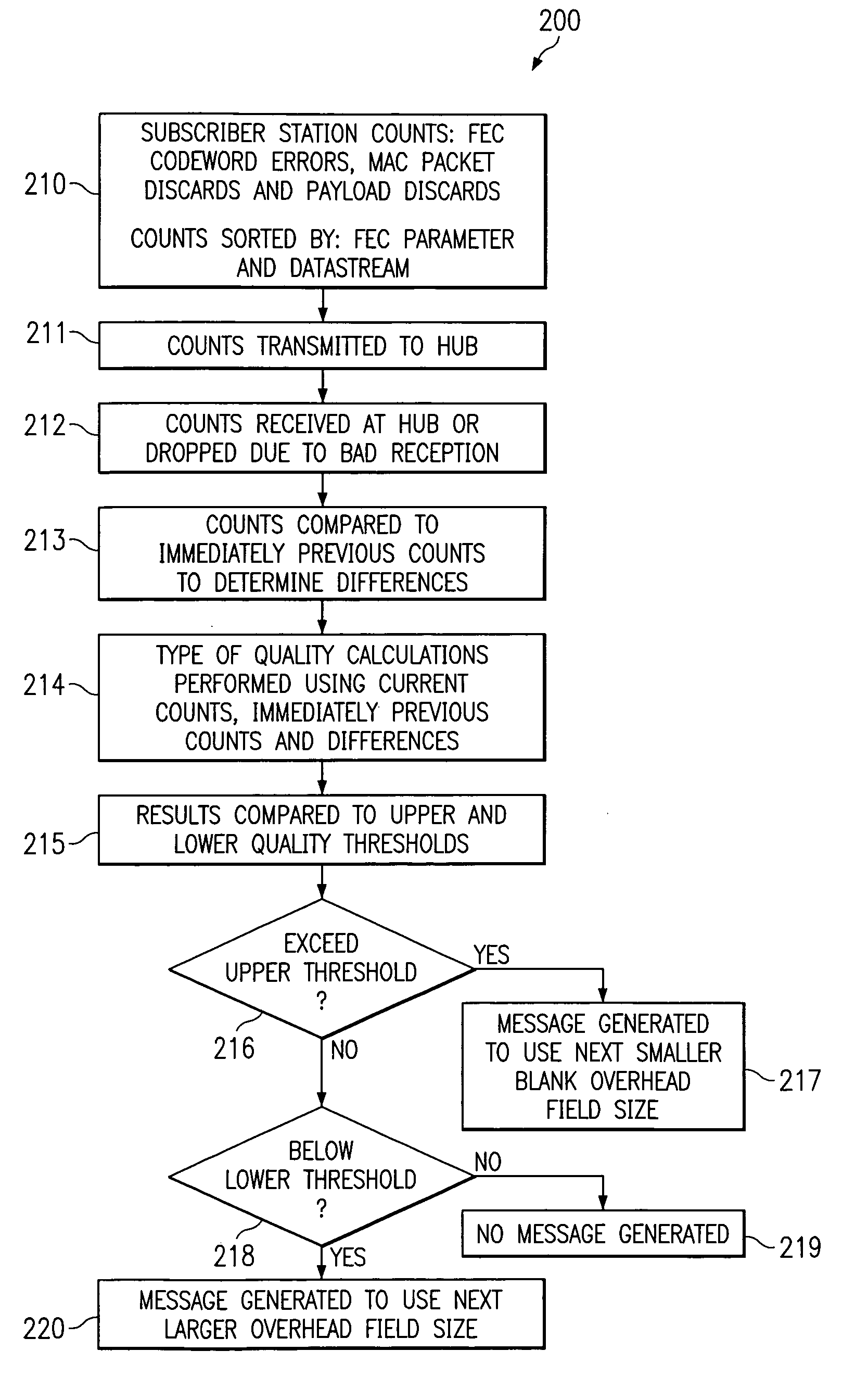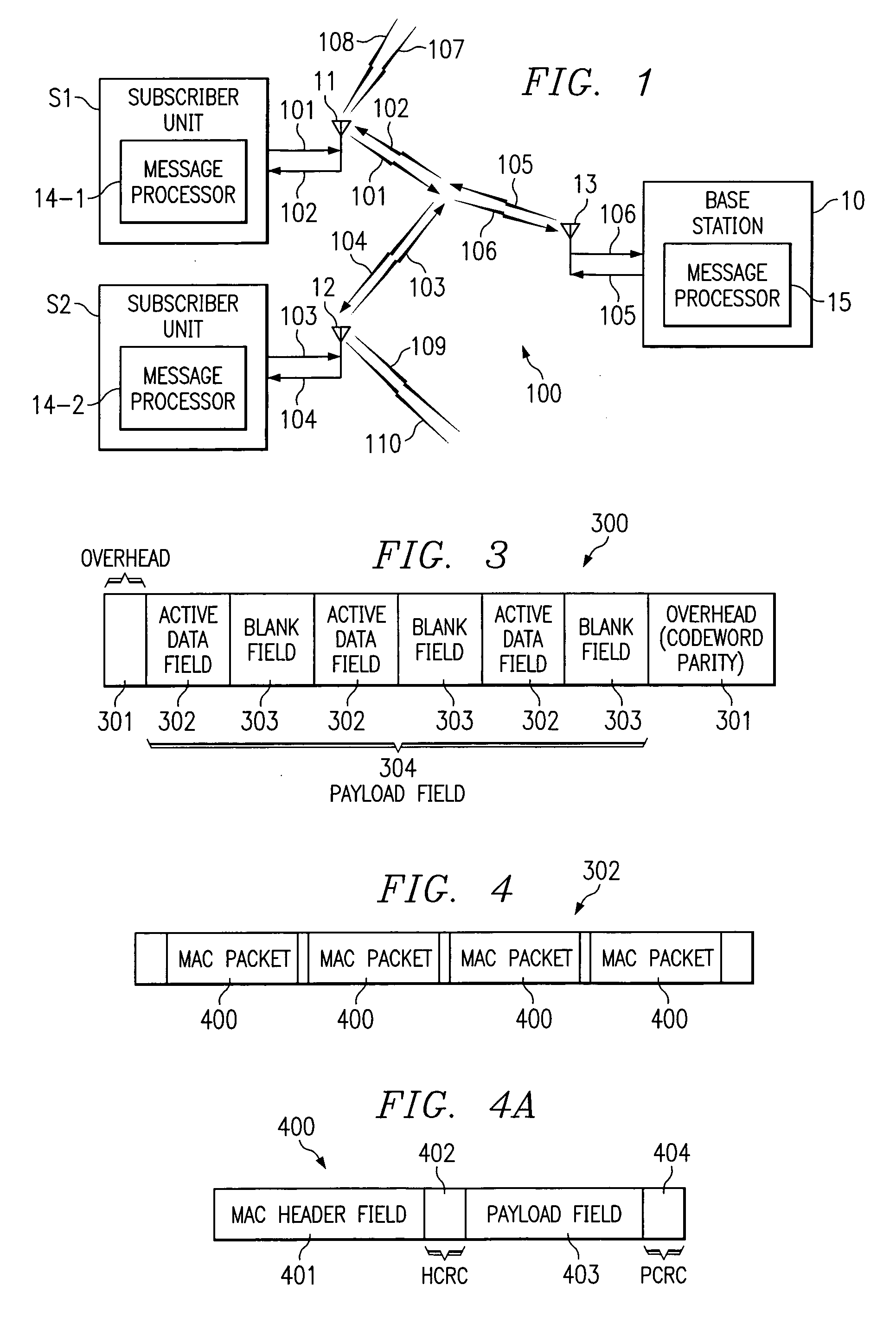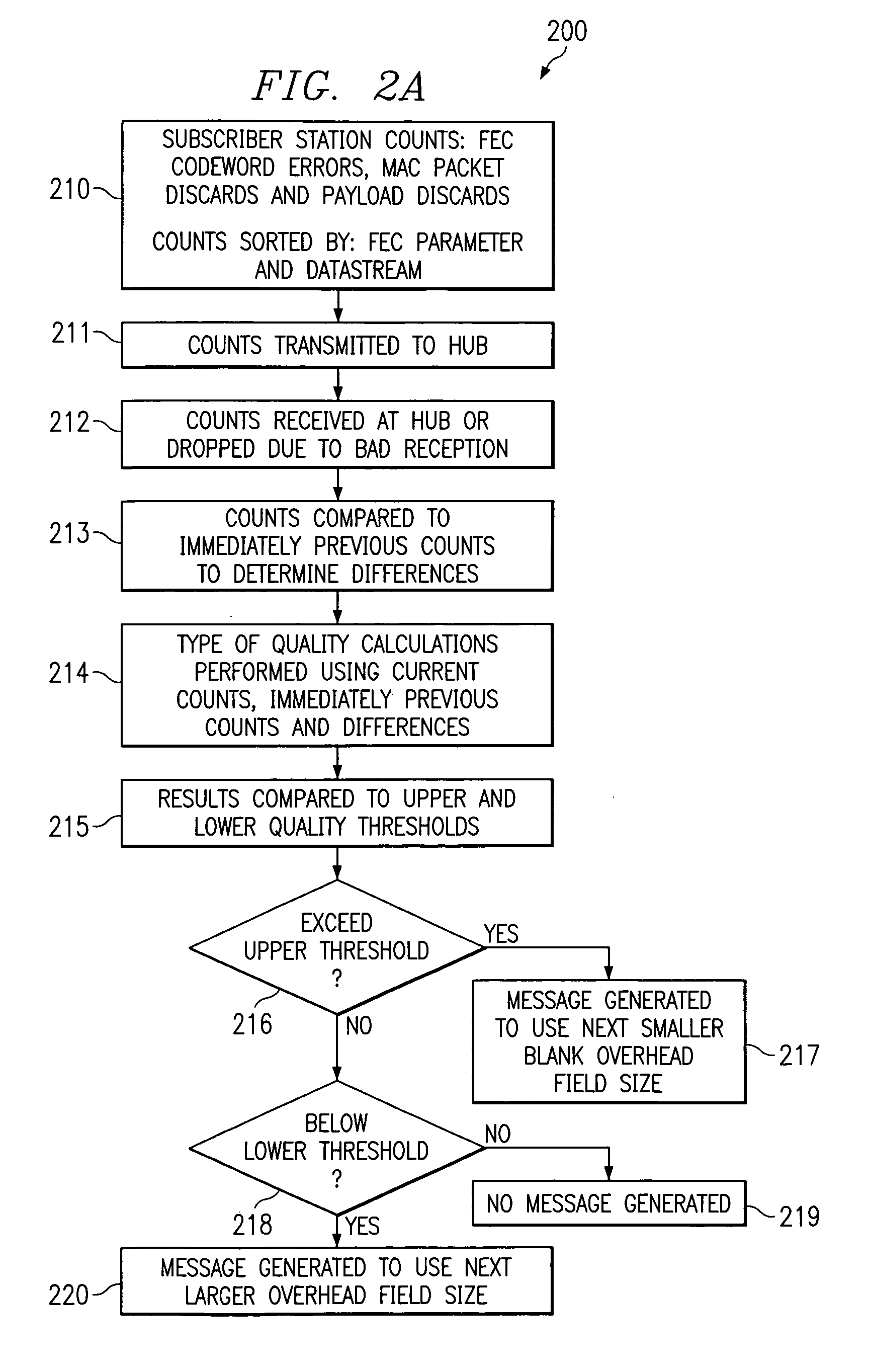System and method for interference mitigation using adaptive forward error correction in a wireless RF data transmission system
- Summary
- Abstract
- Description
- Claims
- Application Information
AI Technical Summary
Benefits of technology
Problems solved by technology
Method used
Image
Examples
Embodiment Construction
[0032]Turning now to FIG. 1, there is shown system 100, which includes a plurality of subscriber stations S1, S2 connected via antennas 11, 12 and 13 to hub base station 10 over an RF interface shown as signals 101, 102, 103, 104, 105 and 106. The system may experience interference such as from noise sources 107, 108, 109 and 110. Signals 102 and 104 are preferably different linearly filtered versions of signal 105. Noise sources 108 and 110 are added to signals 102 and 104 respectively. Similarly, signal 106 is the sum of linearly filtered signals 101 and 103 and noise sources 107 and 109. Included in the subscriber stations are message processors 14-1 and 14-2 respectively, and included in base station 10 is message processor 15. Preferably the hub base station and the subscriber stations exchange FEC encoded data adapted by the present invention.
[0033]The downstream FEC encoder is contained within the base station message processor 15, and a downstream FEC decoder is defined with...
PUM
 Login to View More
Login to View More Abstract
Description
Claims
Application Information
 Login to View More
Login to View More - R&D
- Intellectual Property
- Life Sciences
- Materials
- Tech Scout
- Unparalleled Data Quality
- Higher Quality Content
- 60% Fewer Hallucinations
Browse by: Latest US Patents, China's latest patents, Technical Efficacy Thesaurus, Application Domain, Technology Topic, Popular Technical Reports.
© 2025 PatSnap. All rights reserved.Legal|Privacy policy|Modern Slavery Act Transparency Statement|Sitemap|About US| Contact US: help@patsnap.com



